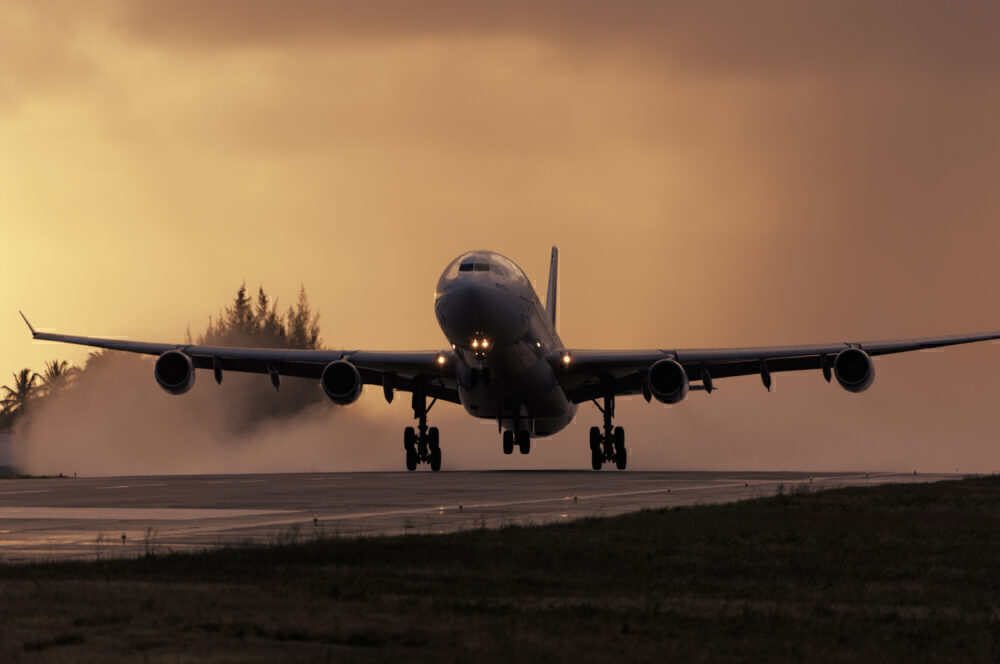Have you ever sat on a plane waiting to be cleared for take-off and suddenly thought about what might happen if an engine fails as the plane begins to take off? For most people, this uncomfortable thought has occurred at least once. But there is no need to panic. V1, otherwise known as the point of no return, is the moment at which take-off cannot be aborted, even if the engine fails.

The point of no return
It’s not a nice thought, thinking about engine failure. Luckily, engineers, manufacturers, and pilots have done plenty of thinking and calculating, so you don’t have to. There are many other things besides engine failure which could cause a pilot to abort take-off and apply the brakes. These include fire, loss of control, adverse weather conditions, or other technical malfunctions. These things can be dealt with by bringing the aircraft to a stop, so long as they happen before V1.
V1 is effectively the point of no return. It is the point at which the plane is committed to taking off. V1 is actually a speed. The precise speed of V1 varies based on the plane weight, runway length, wing flap settings, weather, and more. The exact speed of V1 for each flight is calculated before take-off. Once the plane reaches this speed, it becomes unsafe to apply the brakes and/or reverse thrust and bring the plane to a stop. At this point, the plane is committed to taking off, engine failure or not.
Rotate
After a pilot has confirmed that V1 has been reached, they will move their hand away from the throttle. Until V1 is reached, the pilot generally keeps their hand on the throttle in case they need to abort for any reason.




After the pilot removes their hand from the throttle, they can start to lift the plane’s nose up. This is also the moment when the front wheels will leave the ground. Vr or rotate is the moment at which the aircraft’s thrust becomes greater than the effect of gravity pulling the plane down. At this stage, take-off is inevitable as the plan will certainly leave the ground because of its upwards motion.
Why is V2 important?
The final key speed for take-off is V2. If you’re someone who worries about engine failure during take-off, this is the most important speed you should know. V2 is the safety speed that dictates that even if one engine started to fail, the plane would still be able to take off and perform the appropriate emergency procedure to land safely.
V2 is also calculated before each flight as it can be affected by multiple factors. A plane maintaining a speed of V2 will still reach a height of 35ft off the ground by the end of the runway. When building airports, this height is taken into account to ensure any surrounding building or structure would not be hit by a plane traveling at V2 speed with engine failure. In short, V2 is the speed at which a plane can safely take off after the point of no return has been reached, even if something goes very wrong.




Should you panic?
Because V1 and V2 are calculated before each flight and are unique to every flight, they are extremely accurate. Both speeds are designed to allow for catastrophes like engine failure. Before V1 is reached, take-off can be safely aborted. In the case of V2, once the plane has committed to take off, flight paths are carefully planned so a plane could take off, climb and return to the airport with engine failure at a lower height than normal and still allow for a safe landing.
So, should you panic? We’d say not!



